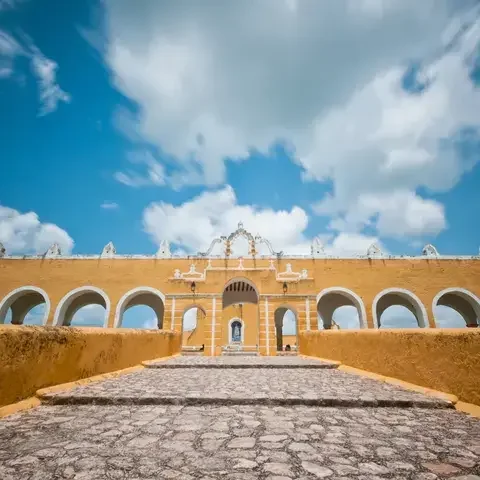It might take time to acclimatise to elevated La Paz, Bolivia, the highest capital city in the world, located 3,625 metres above sea level but once you’ve adapted, the food scene is bursting with Andean highland, valley and Amazonian flavours. From vegan fine dining to tasty street food treats and market stands, Bolivian chef Marsia Taha, who leads the team at Gustu, ranked 45 in Latin America’s 50 Best Restaurants 2022, shares some of the places she loves to eat at in her home city.

iStock
Marsia Taha’s guide to La Paz

iStock
“I love going to the Mercado Rodríguez market to eat wallake, a fish soup made with k’oa, an Andean mint [known as muña in Peru]. It’s a traditional breakfast for market workers, and I go to Doña Rogelia’s, where it’s only served between 5:30am and 9am. After that, I like to wander around La Paz’s most colourful market. It’s the city’s largest food supplier and every morning at dawn, thousands of caseras (buyers and sellers) set up their stalls with products that have just come in from the valleys and tropics, all the best suppliers in Bolivia. I love seeing the seasonal diversity, vegetables, fruits, tubers, chilli peppers and proteins that the caseras offer, and talking to them about what they have. In order to buy any product at the market, you have to have established a relationship with the caseras; they buy and sell, and part of the tradition is to greet each other and have a chat, about the weather, what’s going on in the country and about the products. That dialogue forms part of the market ritual, which makes it special and not just a transaction.”
Mid-morning snacks

iStock
iStock
“A great mid-morning snack is a salteña or a tucumana. These are special dishes – empanadas filled with meat and broth, and one is baked, the other fried – because they are only served at this time of the day. You have to know how to eat them without a spoon and without spilling any of the broth. There are lots of tucumana stalls on the streets, and if you ask any Bolivian about their favourite, they’ll have a strong opinion about which is best. My favourite salteña comes from La Gaita on Potosí Street, which stands out for its sweetest dough.”
Medicinal herbs

iStock
“Mercado de las brujas, is four blocks from Rodríguez market and has a huge selection of herbs, seeds and elements considered medicinal or that have the power to solve health and life problems – berries to make children talk, herbs that heal kidneys and rituals to cure the ills of love. I source native ingredients that sometimes get lost in conventional gastronomy but whose tradition and flavours are incredible from here. There’s always a casera who has something new each season.”
Coca Museum
“Take a walk along Calle Sagárnaga in the historic old town that’s full of artisans creating awayos (Andean textiles) and fabrics of all colours. In addition to finding the most popular crafts, you can find beautiful antiques, textiles from remote communities and an abundance of Bolivian creativity and ingenuity. The Coca Museum is located on the same street, which highlights the importance of the coca leaf in Andean culture; the best part for me is the tasty handmade coca leaf sweets.”
Lunchtime

“For a traditional lunch, I love Phayawi, a restaurant in the southern zone that offers food according to its slogan “just like my grandma used to make it” in a well-illuminated space with an indoor market where you can also buy high-quality handmade Bolivian wares.”
Teatime

“For great coffee and a slice of cheesecake, head to Lolo Pastelería de Autor, a cake shop with French influence with plenty of Bolivian flair. They might use Amazonian products such as Bolivian vanilla as well as endemic fruits and nuts. In addition, its speciality coffee is a great companion for a good chat. If you’re still hungry, at the beginning of Calle Tejada Sorzano in Miraflores, there’s a street food cart with a few seats that sells the best api – a purple corn drink that’s served hot – and buñuelos (fritters) in the city.”
For dinner

“Some of my favourite restaurants in La Paz are Ancestral, which cooks strictly Bolivian ingredients over open fires; Ali Pacha, which serves delicious vegan menus that adhere to using local products and is located in the old town; Propiedad Pública, a casual spot for fresh pasta and great wine; and La Rufina for when I have the urge to eat traditional dishes such as relleno de papa (fried beef and potato balls) and menudito, a meat and corn casserole.”
Late nights

“I love going to El Bestiario to eat smoked pork, drink cocktails and listen to jazz; Thursdays are the best nights. Theatre lovers Juan Pablo and Diego run this bohemian and colourful spot that’s decorated with images of hyperrealistic cholas (Indigenous women), Andean mermaid lithographs and photography exhibits that change up each week. Diego is behind the stick, creating his own liqueurs, infusions and spirits – he always has an experimental bottle open to share or a new cocktail to try.
“If you’re on your way home, go for an anticucho, a skewer of thinly sliced beef heart cooked on a high-fire grill that’s served with potatoes and a spicy peanut sauce. I go to Corázon en llamas (Heart On Fire), a stall on the corner of Aspiazu and October 20 streets, right opposite El Bestiario. There’s always a queue, while in the background, there’s an incredible selection of well-curated music from someone’s home including disco and 1990s hits. There’s nothing quite like listening to ‘I've Got The Power’ at the end of the night with a hot meal, next to the heat of the grill, laughing with friends. And, if I’m still hungry, I go to Mercado Las Velas: this market is home to the best street food in the city – after dark. It’s open until dawn and has heaps of options. I usually have silpancho, a carb-heavy dish from Cochabamba.”
On Sundays

“As you can fly across La Paz – by cable car – on Sundays it’s fun to take several teleférico routes. I love observing people’s daily lives from the air; there’s always a corner with something interesting happening or I spy some hidden-away garden that I haven't seen before. You can reach the picturesque cemetery by cable car and see the interaction people have with their muertos (deceased relatives), and when you leave the cemetery, go for one of the famous handmade cinnamon ice creams. There are dozens of vibrant stands and the caseras fight to be able to offer you “the real”, “the original” or “the best” ice cream in the city.
“From the cemetery, you can easily visit the Mercado de los pescados street (fish market), whose wares arrive every dawn from the interior of the country. Listen to the caseras gossiping away while eating tasty fried fish caught in Lake Titicaca with its chuño freeze-dried potato and llajua sauce. Accompany with boiled mocochinchi, a dehydrated peach juice.”






